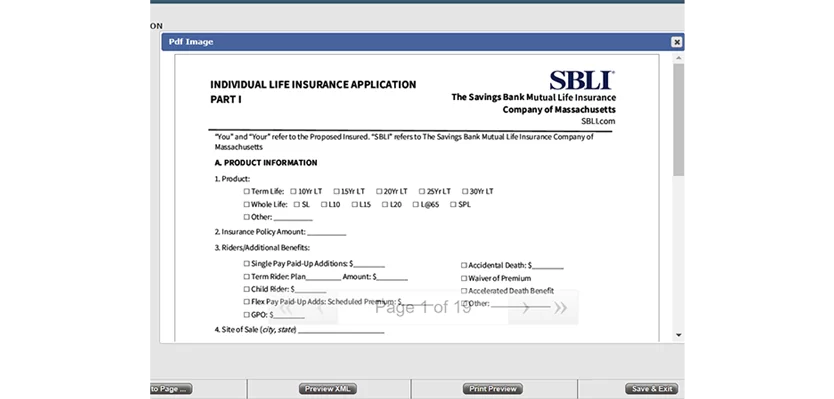Client
The client is an American company that provides automation and technology solutions for the financial and insurance industry. Insurance carriers, brokers, and paramedical companies use their software to streamline the process of collecting information for life insurance applications.
Project
The client has four core solutions: a singular quoting application and three processing entities that comprise a drop ticket platform. The quoting app gathers basic information about a customer and then routes that info to one of the three subsequent systems designed to receive it: call centers, agents, or clients.
Elinext, a reliable partner to the client since 2003, took over the role of sole vendor for the entire project in 2020. The initial requirement was to develop the new UI for one of the three subsequent systems mentioned above; later, the scope of work evolved and applied to the other solutions as well. In addition, Elinext was involved in the development of both front-end and back-end parts of the systems, and in supporting and extending functionality.
Challenge
All applications were developed by other vendors in the past, which left the code and app logic without documentation. This resulted in a lack of information regarding how new questions appear dynamically in real-time, how business logic should work and how interaction with third-party systems is configured. To address this issue, the Elinext team manually reviewed over 4,000,000 rows of code to determine the principles of business logic and then had the ability to further modify the application according to customer requirements.
Solution
The new interface is a flexible solution that updates the content of a questionnaire in real time.
For example, when users indicate that they have a driver’s license, a question about the date of issue appears on the screen. The same approach is used to dynamically add new pages, making the length of a questionnaire vary from 3 to 20 pages.
To achieve high-security standards, we implemented multi-factor authorization via SMS or voice call. When a user logs in to apply, the page validates individual information such as date of birth, zip code, and home state, all retrieved from other client systems.
The systems are integrated with a third-party eSignature tool. To ensure that users sign their life insurance applications in the correct locations, we have defined specific areas that are displayed automatically. The system then generates applications as PDF documents and as a set of XML data files, and sends them via email or web services to an agent or a client.
To streamline the processing of applications, we have added a feature that notifies both a client and an agent via email about the steps that were taken — when the application was opened, signed, or sent.
The project is ongoing and involves 23 people on the Elinext side working on three specific parts:
- Application support — This work involves constant modifications based on customer requirements, including changes to business logic and input and output forms (PDF, XML). Additionally, the team is actively updating outdated parts of the application using new technologies and optimizing the code.
- Development of lightweight applications — The team is focused on creating lightweight apps tailored to small-sized insurance and financial companies, delivering less complex interviews compared to the original apps.
- Security testing — This is an ongoing task aimed at ensuring the level of security maintains its current standards and continues to eliminate vulnerabilities. Recently, the team upgraded the security rating from 2.3 to a score of 5 out of 5 points.
Results
The new interface provides a flexible way to create interviews and pages in real-time. With over 168 releases in a year, the team has created a modern interface adapted to accessibility and security standards.
This project has instilled in the client an idea of future cooperation with Elinext. The plan is to develop an application where agents can utilize basic templates to create and edit interviews. This approach will enable the client to contact a development team only when necessary to make adjustments to the application's logic. Moreover, this strategy reduces the overall solution cost for the client while expanding their market coverage.
























